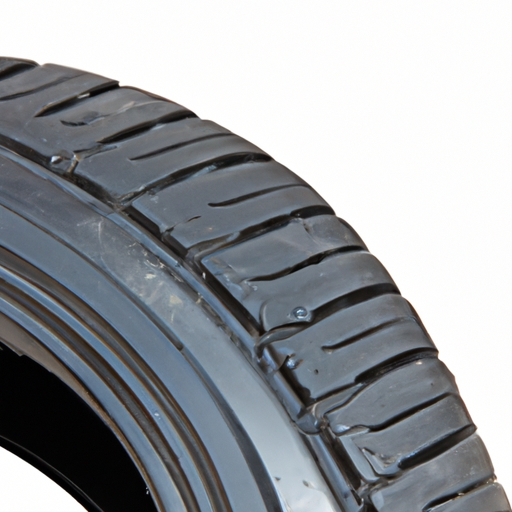Have you ever wondered if summer tires truly live up to their reputation on dry and hot roads? Well, you’re in luck because this article answers that very question. Packed with insightful information and expert analysis, we explore the performance of summer tires on dry and hot roads, leaving you with a clear understanding of their capabilities and whether they’re the right choice for your summer driving adventures. So, buckle up and get ready to uncover the truth behind summer tires’ performance in scorching conditions.
Understanding Summer Tires
Composition of Summer Tires
Summer tires, also known as performance tires, are designed specifically for optimal performance in dry and hot road conditions. These tires are made using a unique blend of rubber compounds that are specifically formulated to provide maximum grip and traction on dry surfaces. The composition of summer tires also includes a tread pattern that helps to improve handling and control, especially during cornering and braking.
Tread Patterns and Designs
The tread pattern of summer tires plays a crucial role in their performance on dry and hot roads. These tires often have shallower and wider grooves compared to all-season tires, which allows for better contact between the tire and the road surface. The tread design of summer tires is optimized to provide maximum stability, improved handling, and shorter braking distances on dry roads. The unique patterns and designs of summer tires help to enhance their overall performance and deliver a superior driving experience.
Benefits of Summer Tires
Summer tires offer numerous benefits for drivers in dry and hot road conditions. One of the key advantages is their exceptional grip and traction on dry surfaces, which allows for better control and maneuverability. The specialized rubber compounds used in summer tires also help to provide enhanced cornering stability, ensuring precise handling even during sharp turns. Additionally, summer tires have shorter braking distances, reducing the risk of accidents and improving overall safety. Moreover, these tires are known to reduce the risk of hydroplaning, providing better stability during rainy periods.
Limitations of Summer Tires
While summer tires excel in dry and hot road conditions, they do have limitations. These tires may not perform optimally in wet and cold conditions, as their tread patterns are not designed to channel water or provide sufficient traction on slippery surfaces. Furthermore, summer tires tend to wear out faster compared to all-season tires, necessitating more frequent replacement. It is important to understand these limitations and consider the specific weather conditions you will encounter before choosing summer tires for your vehicle.
Tire Performance Factors
Friction and Grip
Friction and grip are crucial factors that define the performance of summer tires on dry and hot roads. The unique rubber compounds used in these tires ensure excellent traction, allowing the tires to grip the road surface tightly. The increased friction between the tires and the road enhances stability, provides better acceleration, and contributes to safer and more precise maneuvering.
Heat Resistance
One of the key performance factors of summer tires is their ability to withstand and dissipate heat efficiently. Summer tires are specifically designed to handle high temperatures generated by dry and hot road surfaces. The unique composition of these tires helps to efficiently dissipate heat, preventing excessive heat buildup that can result in tire damage or blowouts. The heat resistance of summer tires ensures their longevity and contributes to a safe and reliable driving experience.
Dry Road Performance
Dry road performance is a critical aspect of summer tires. The specialized rubber compounds and tread patterns of these tires provide excellent grip and traction on dry surfaces, allowing for better acceleration, precise handling, and improved overall control. The superior dry road performance of summer tires contributes to a smooth and enjoyable driving experience, particularly in areas with predominantly dry weather conditions.
Hot Road Performance
Hot road performance is another important factor to consider when evaluating summer tires. These tires are designed to excel in high-temperature conditions, delivering optimal performance even when the road surface reaches extreme temperatures. The heat-resistant rubber compounds used in summer tires ensure maximum grip and stability, allowing for confident driving on hot roads.

Dry Road Performance of Summer Tires
Optimal Contact Patch
The optimal contact patch is a key feature of summer tires that contributes to their exceptional performance on dry roads. The wider and shallower grooves on the tread pattern of summer tires maximize the contact area between the tire and the road surface. This larger contact patch enhances the tire’s grip, allowing for better acceleration, improved cornering stability, and superior overall control.
Enhanced Cornering Stability
Summer tires are designed to provide enhanced cornering stability on dry roads. The unique tread patterns and firm sidewalls of these tires minimize lateral movement during turns, reducing the risk of skidding or losing control. The superior cornering stability of summer tires allows for more precise and controlled maneuvering, enhancing the overall driving experience.
Improved Braking Distance
Summer tires are known for their shorter braking distances on dry roads. The specialized rubber compounds used in these tires, along with the unique tread patterns, optimize traction and grip during braking maneuvers. With reduced braking distances, drivers can have better control over their vehicles and can respond more effectively to sudden stops or obstacles on the road.
Reduced Hydroplaning Risk
One of the advantages of summer tires on dry roads is their ability to reduce the risk of hydroplaning. The shallower and wider grooves on the tread pattern of summer tires efficiently channel water away from the tire’s surface, preventing the build-up of water between the tire and the road. This helps to maintain better traction and grip, reducing the chances of hydroplaning and ensuring enhanced safety during rainy periods.
Heat Resistance of Summer Tires
High Temperature Tolerance
Summer tires are designed to withstand high temperatures that are common on hot roads. The specialized rubber compounds used in the construction of these tires have excellent heat resistance, ensuring that the tires maintain their performance even in extreme heat. This high temperature tolerance prevents the tires from softening or degrading, allowing for consistent performance and increased durability.
Minimizing Heat Build-up
Summer tires are engineered to efficiently dissipate heat and minimize heat build-up during prolonged periods of driving on hot roads. The tread patterns and specialized rubber compounds used in these tires help to dissipate heat, preventing it from accumulating within the tire. By minimizing heat build-up, summer tires maintain their structural integrity and prevent potential tire damage or failures.
Prevention of Tire Blowouts
The heat resistance of summer tires plays a crucial role in preventing tire blowouts. The specialized rubber compounds used in these tires help to dissipate heat, reducing the risk of excessive heat build-up and potential tire failure. The ability of summer tires to handle high temperatures without compromising their performance significantly reduces the probability of tire blowouts, enhancing the safety and reliability of the driving experience.

Tire Composition for Hot Road Performance
Specialized Rubber Compounds
The composition of summer tires includes specialized rubber compounds that are specifically designed to perform optimally on hot roads. These rubber compounds are formulated to provide excellent heat resistance, ensuring that the tires maintain their performance and stability even in extreme temperatures. The unique blend of rubber compounds in summer tires enhances their grip, traction, and overall performance on hot road surfaces.
Unique Tread Compounds
Aside from specialized rubber compounds, summer tires also feature unique tread compounds that contribute to their hot road performance. These tread compounds are designed to withstand the high temperatures generated by hot road surfaces, providing optimal grip and traction. The specific formulation of tread compounds in summer tires ensures that the tires maintain their performance, stability, and durability in the challenging conditions of hot roads.
Understanding Road Conditions
Dry Road Conditions
Dry road conditions refer to roads that are free from moisture, such as rain or snow. In these conditions, the road surface is generally clean and offers higher levels of friction. Dry road conditions are where summer tires truly shine, as their specialized tread patterns and rubber compounds are specifically tailored to provide maximum grip and traction on such surfaces. When driving on dry roads, summer tires deliver excellent performance and responsiveness, allowing for better acceleration, handling, and control.
Hot Road Conditions
Hot road conditions are characterized by extremely high temperatures, often resulting from direct sunlight or heatwaves. The intense heat can cause the road surface to become significantly hotter, posing potential challenges for tire performance. However, summer tires are designed to excel in hot road conditions. Their heat-resistant rubber compounds and unique tread patterns enable them to maintain optimal grip, traction, and stability even on extremely hot road surfaces. Summer tires are engineered to ensure that the tires remain reliable and perform at their best, regardless of the temperature.
Effect of Temperature on Road Surfaces
Temperature can significantly impact the performance of tires on different road surfaces. In dry and hot road conditions, the road surface becomes hotter, affecting the grip and traction of the tires. The specialized rubber compounds and tread patterns of summer tires are designed to counteract this effect by providing enhanced grip and stability, even on hot road surfaces. Understanding the relationship between temperature and road surfaces is crucial in evaluating the performance of summer tires and choosing the right tires for specific weather conditions.

Factors Affecting Tire Performance on Hot Roads
Tire Pressure
Maintaining proper tire pressure is essential for optimal tire performance on hot roads. As the ambient temperature rises, so does the tire pressure. It is important to monitor and adjust tire pressure regularly, following the manufacturer’s recommendations, to ensure that the tires are correctly inflated. Proper tire pressure maximizes the tire’s contact with the road and helps to maintain stability and grip, enhancing overall performance and safety.
Tire Inflation
In addition to tire pressure, tire inflation is another critical factor affecting tire performance on hot roads. Overinflated or underinflated tires can lead to reduced grip, poor handling, and increased risk of tire damage or failure. It is crucial to maintain the recommended tire inflation levels for summer tires, as specified by the manufacturer. Proper tire inflation ensures even tread wear, optimal traction, and enhanced performance on hot road surfaces.
Tire Wear
Tire wear significantly affects tire performance on hot roads. Worn-out or bald tires have reduced tread depth, resulting in decreased grip and traction. It is important to regularly inspect the tread depth of summer tires and replace them when they reach the recommended wear limit. Fresh, adequate tread depth ensures optimal grip, minimizing the risk of skidding or loss of control on hot road surfaces.
Tire Maintenance
Regular tire maintenance plays a vital role in ensuring optimal performance of summer tires on hot roads. This includes routine inspections, checking for any signs of damage, such as cuts, bulges, or punctures. It is also essential to rotate the tires regularly to ensure even wear and promote longevity. Proper tire maintenance, including alignment checks and balancing, maximizes the performance and lifespan of summer tires, allowing for safe and enjoyable driving experiences.
Comparing Summer and All-Season Tires on Dry and Hot Roads
Tread Design Comparison
Summer tires and all-season tires have distinct tread designs, specially tailored to suit different weather conditions. While all-season tires are designed to provide adequate performance in various weather conditions, summer tires are optimized for dry and hot road surfaces. The tread patterns of summer tires have shallower grooves and more continuous blocks compared to all-season tires, allowing for better grip and stability on dry roads. Additionally, summer tires’ tread designs are engineered to efficiently channel water away during rainy periods, reducing the risk of hydroplaning.
Grip and Handling Comparison
The grip and handling capabilities of summer tires and all-season tires differ significantly. Summer tires, with their specialized rubber compounds and unique tread patterns, deliver superior grip and handling on dry and hot roads. The optimized grip of summer tires allows for better acceleration, precise cornering, and enhanced overall control. All-season tires, on the other hand, are designed to provide acceptable performance in a wide range of weather conditions, compromising some of the grip and handling capabilities offered by summer tires on dry and hot roads.
Braking Distance Comparison
One of the critical factors in evaluating tire performance is braking distance. Summer tires have shorter braking distances on dry roads compared to all-season tires. The specialized rubber compounds and tread patterns of summer tires optimize traction and grip during braking, allowing for more efficient and safer stopping. All-season tires, while still offering acceptable braking performance in various weather conditions, may not provide the same level of responsiveness and shorter braking distances as summer tires on dry and hot roads.

Tips for Optimizing Performance of Summer Tires in Hot Conditions
Regular Tire Inspections
Regular tire inspections are essential to ensure optimal performance of summer tires in hot conditions. Inspecting the tires for any signs of damage or wear allows for early detection and intervention, preventing potential issues from affecting tire performance. Regular inspections also help monitor tire inflation levels and address any deviations promptly, maximizing the performance and lifespan of summer tires.
Proper Tire Inflation
Maintaining proper tire inflation is crucial for optimizing the performance of summer tires in hot conditions. Monitoring and adjusting tire pressure in accordance with the manufacturer’s recommendations helps to ensure optimal grip, stability, and overall performance. Properly inflated summer tires can handle hot road surfaces more effectively, providing enhanced handling, braking, and control.
Avoiding Overloading
Overloading a vehicle can negatively impact tire performance, particularly in hot conditions. Excess weight puts additional strain on the tires, causing them to generate more heat and potentially leading to tire damage or failure. It is important to respect the recommended load capacity for the vehicle and avoid exceeding it to maintain the optimal performance and safety of summer tires.
Avoiding Aggressive Driving
Aggressive driving behaviors, such as hard acceleration, sharp braking, and fast cornering, can significantly affect tire performance, especially in hot conditions. Such driving practices generate additional heat, increasing the strain on the tires and potentially compromising their grip and stability. To optimize the performance of summer tires in hot conditions, it is recommended to drive responsibly, avoiding aggressive maneuvers that can put unnecessary stress on the tires.
Conclusion
Superior Performance of Summer Tires on Dry and Hot Roads
Summer tires offer exceptional performance on dry and hot roads, thanks to their specialized rubber compounds, unique tread designs, and heat resistance. These tires provide maximum grip, enhanced cornering stability, improved braking distances, and reduced hydroplaning risk. Summer tires excel in hotter temperatures, delivering reliable and safe driving experiences even in challenging conditions.
Considerations for Optimal Performance
To ensure the optimal performance of summer tires on dry and hot roads, it is crucial to consider factors such as tire pressure, tire inflation, tire wear, and tire maintenance. Regular inspections, proper tire inflation, avoiding overloading, and responsible driving practices are key to maximizing the performance and lifespan of summer tires. By understanding the unique characteristics of summer tires and taking the necessary precautions, drivers can fully enjoy the benefits and superior performance these tires offer on dry and hot roads.


